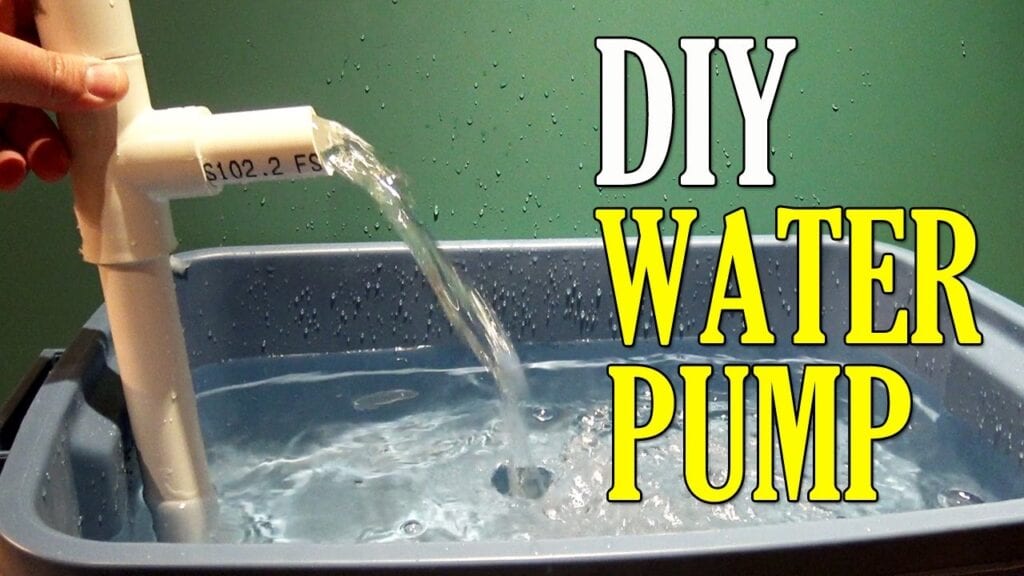What is a water pump?
A water pump is also called as a dewatering system which is widely used for the removal of water from various sites including agricultural, river beds, underground metro networks and more. It is a water control equipment that is especially useful during the rainy seasons as water tends to collect quite easily. Water pumps are of many types that include centrifugal pumps, positive displacement pumps, submersible pumps, jet pumps and many more. While some systems are set up as a long term solution wherein they can be turned on anytime, others are used on a short term basis.
However, the traditional water pumps are very heavy and take up too much of space which can be limiting or restricting in many ways. They are also known to have their own disadvantages as well. This is why, thanks to the advancement in technology, we have the portable water pumps. These latest additions form an integral part of the entire process. Not to forget, they are simple to use, lightweight and pretty affordable as well. You can easily find a wide range of brands that deal with portable water pumps. Let’s have a detailed look at it’s uses and how you can make one yourself.
Use Of A Water Pump

Water pumps are not restricted to only construction sites but they are also widely used in industrial sites, residential areas, or commercial sites as well. These machines are designed to move water from one place to another. This can be the simplest way to explain the term. While traditional water pumps have a lot of disadvantages, the new portable water pump is a fresh new addition that is specially designed to make your life simpler and hassle free. They can be used in a wide range of set ups with ease and are efficient pieces of machines suitable for an array of jobs.
What Type Of Water Pump Do You Need?
If you are planning to buy a water pump, then you need to be aware of the different kinds of water pumps that are available. There are many kinds of water pumps are that suitable for various uses. Firstly, you will need to have a look at the size as well as the site of the operation. Second factor is the distance that will be required for pumping or moving the water. These are the basic factors that will help you to determine the kind of water pump that you need.
Water pumps have different sizes of hose lengths that can be applicable for different types of work. If you are working in a large distance of area, then you can consider using a high head pump. Also, a submersible pump will be the best if there is a elevation difference between the fluid and the pump. Having a look at the site operation will give you a better description of the kind of water pump that you will need. It is best to consider all of these factors before you head over to getting your desired water pump.
DIY Water Pump: How To Make Your Own DIY Water Pump In Easy Steps
Looking for an interesting way to build a DIY water pump? Then let’s get started. This is going to be a very simple DIY project that you can easily try out at home. Without wasting further time, let’s dive straight into it.
Materials Required:
- 3vDC Motor
- Impeller (this is made from a plastic wheel)
- Plastic canister (the motor needs to fit in here)
- Screwable nozzles
- Epoxy glue
- Plastic sheet (0.5mm)
- Electrical wire
- Drill
- Dremel
- Knife
The materials that are used here can vary in size or shape. However, the main thing here is that the idea remains the same.
Step 1: The first thing we do is set the impeller. You can use a plastic wheel for the purpose. Make sure that the inside structure is similar to what you are looking for. Else, remove the excess plastic.
Step 2: Secondly, you need to fix all the holes that may be present in the motor. Once we are done with that, you weld the cables. It is best to use a round and thick cable which will make it simpler to seal or secure the power hole.
Step 3: Once the motor is sealed and you have made the holes for the wires to pass through, put a good amount of epoxy right at the bottom. Next you need to slide the cables along the holes and the motor.
Step 4: Make sure that the motor is centered. Add a spacer under and to the sides so that it does not change the position.
Step 5: Let the glue dry and add more if required.
Step 6: If your motor isn’t big enough to fit the hole, keep adding a generous amount of epoxy to firmly hold it in it’s place. Now we come to the upper part where we cut a plastic washer to cover the area that is around the shaft. This is done so that the epoxy is free from chemicals. At the same time, it also adds a resistant surface.
Step 7: Once the glue is dry, you can remove it with a knife.
Step 8: Finally, now that you have added the motor and secured it in it’s place, make two holes. These holes are for the in-out nozzles. Make sure that you make these holes smaller and also heat the nozzles such that they have a threaded hole.
Step 9: If you are a beginner, then you can first try using an empty canister. You can later add the motor.
Step 10: Here we are done. Try this amazing water pump and see how well it works for you.
Types Of Water Pumps

- Pressure Tanks: This water pump is known to regulate the water pressure as it enters your home. This kind of water pump is suitable for places that experience all the four seasons. This is mainly because seasonal or weather changes can alter the pressure of water.
- Well Pumps: This kind of water pump is used to remove water from an underground source that connects to pipes for home use. The advantage of using a well pump is that you can easily select the right device with the appropriate horsepower that is suitable for your needs.
- Sump Pumps: This water pump is the best solution for removal of excess water during floods, rain or melting snow. These kinds of pumps are installed in thr basement which is where they can collect easily. Sump pumps are designed to manage a large amount of water.
Conclusion:
In this article, we have discussed the basic points that you need to know about portable water pumps. We also looked at an easy method to make your own DIY water pump. If you are looking to build one for yourself, then we hope our steps are clear enough to help you get a better understanding of the process. Do let us know how it turned out for you. Also, do not forget to share your feedback or suggestions to help us improve. Happy Building!






